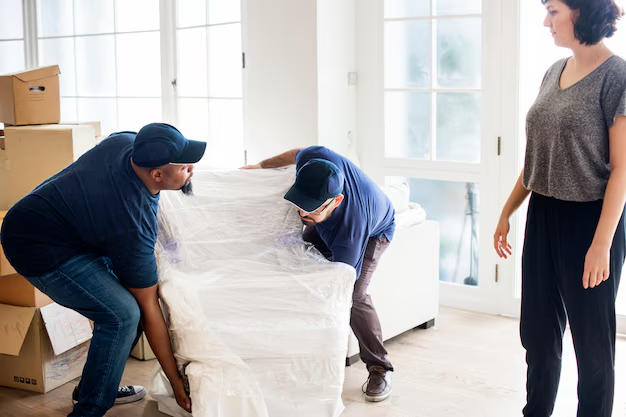
Even with careful planning and professional movers, accidents can happen. Whether it’s a scratched table, a cracked TV screen, or broken dishes, discovering that your belongings were damaged during a move is frustrating and stressful. Fortunately, there are steps you can take to address the issue, seek compensation, and protect yourself in the future. Here’s a practical guide on what to do if your items are damaged during a move.
Step 1: Stay Calm and Assess the Situation
When you first notice damage, it’s natural to feel upset—but staying calm is essential. Take a deep breath and begin by assessing the damage thoroughly. Go room by room, inspecting furniture, electronics, boxes, and fragile items. Don’t rush through this process. Some issues may not be visible at first glance, especially if boxes are still sealed.
Keep a checklist or inventory nearby to track what’s been damaged. If you hired professional movers, you may have signed an inventory sheet—compare it to your own list and note any discrepancies.
Step 2: Take Photos and Document the Damage
Visual proof is one of the most important tools when filing a damage claim. As soon as you discover a broken or damaged item, take clear, high-quality photos from multiple angles. Include close-ups of scratches, cracks, or dents, as well as wider shots that show the item in its full context.
If the item was in a box, photograph the box, packing materials, and any visible signs of mishandling (such as crushed corners or water damage). If possible, gather receipts or documentation that proves the value of the item, especially for high-cost belongings like electronics, artwork, or antiques.
Step 3: Review Your Moving Contract and Insurance
Before contacting the movers, review the contract you signed with them. Most reputable companies offer two types of coverage:
- Released Value Protection – This is basic coverage included in most moving services, but it only pays a limited amount (typically $0.60 per pound per item), regardless of actual value.
- Full Value Protection – This is more comprehensive, covering the replacement, repair, or reimbursement of damaged items based on their current value.
Some homeowners or renters insurance policies may also cover moving-related damage. Contact your insurer to find out if your policy applies.
Knowing what coverage you have will prepare you for conversations with the moving company and help you understand what compensation to expect.
Step 4: Contact the Moving Company Immediately
Don’t delay—most moving companies have a limited window (often 9 months) during which you can file a claim for damaged items. However, the sooner you notify them, the better. Call the company and explain the situation clearly and politely. Be ready to provide:
- Your move date and reference number
- A list of damaged items
- Photos and documentation
- Your moving contract and inventory list
Follow up your call with an email or written letter so you have a record of the conversation.
Step 5: File a Formal Damage Claim
Most professional moving companies have a formal claims process. They may provide a form you need to fill out, either online or on paper. Submit all documentation, including:
- Photos of the damage
- Proof of value (invoices, receipts, or estimates)
- Your signed inventory list
- A written description of what happened
Once your claim is submitted, the company may schedule an inspection or request additional information. Keep copies of all correspondence and stay organized in case you need to escalate the matter.
Step 6: Follow Up and Be Persistent
Moving companies are often handling multiple claims, so don’t be afraid to follow up regularly. If you haven’t heard back within the timeframe they promised (typically 30–60 days), contact them again. Keep your tone professional and polite, but firm.
Persistence is important—if your claim is valid and well-documented, you have the right to compensation.
Step 7: Consider Mediation or Legal Action (If Needed)
If the moving company refuses to accept responsibility or denies your claim unfairly, you still have options:
- Contact the FMCSA (Federal Motor Carrier Safety Administration) – If the move was interstate, you can file a complaint through their official website.
- Seek third-party mediation – Some states offer consumer mediation services to resolve disputes between customers and moving companies.
- Pursue legal action – For high-value losses, consulting with a legal professional may be worth it.
While legal action is a last resort, it can be effective if the moving company fails to respond appropriately.
Step 8: Prevent Future Damage
Experiencing damage during a move is frustrating, but it can also be a learning experience. For future moves:
- Hire movers with excellent reviews and proven experience
- Purchase full-value protection or third-party insurance
- Pack fragile items with extra care, or let professionals handle them
- Label boxes clearly with “FRAGILE” or “THIS SIDE UP”
- Create a detailed inventory before and after the move
Taking preventive steps can reduce the risk of damage and give you peace of mind next time.
Final Thoughts
No one wants to deal with broken items after a move, but handling the situation correctly can make a big difference. Document everything, understand your rights, and don’t hesitate to push for fair treatment. With the right response, you can recover your losses and ensure your belongings are treated with more care in the future.


